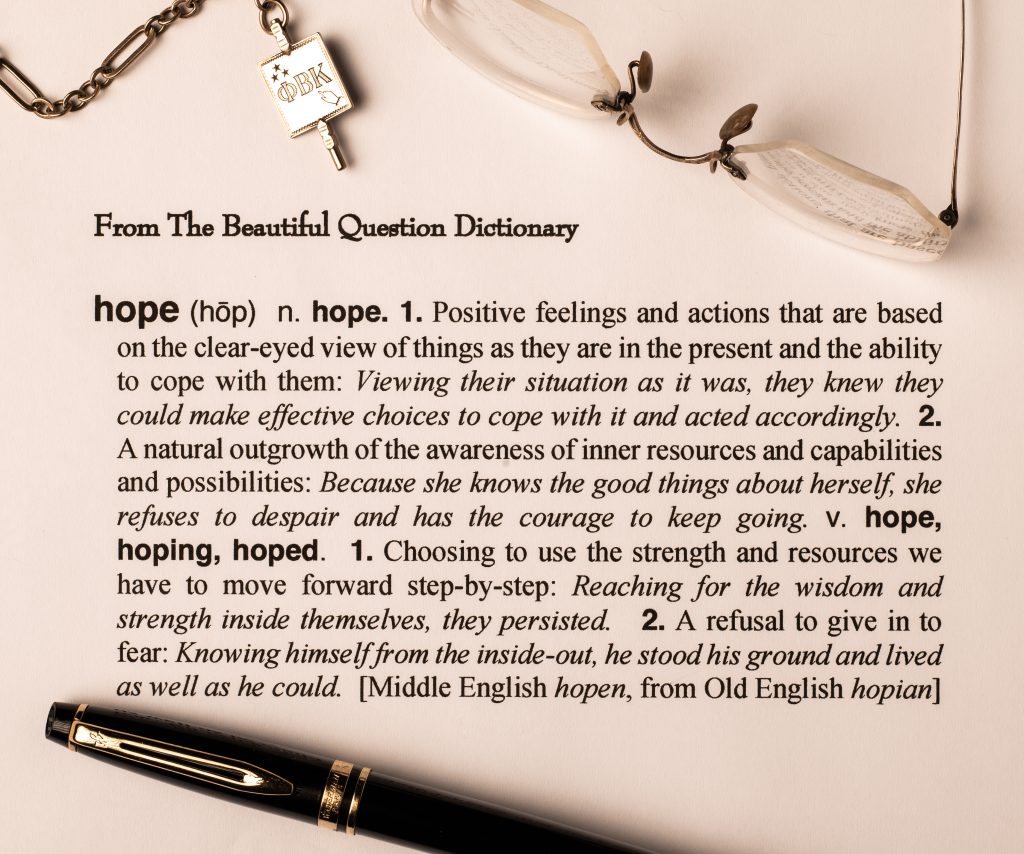Rethinking Hope
[ theme music & intro ]
With more and more people telling me about their struggles to stay hopeful during this time of sweeping change, this is a good time to re-consider the nature of hope.
Stay with me as we look at hope from the inside out, clarifying what it is, what it isn’t, and where to find it.
[ brief pause as theme music fades ]
Most of us use the word “hope” assuming that that we know what it means, but have we correctly defined it? And for that matter, does our understanding of it match what others think about it? In both cases, I have doubts.
The German poet and philosopher, Johanne Wolfgang von Goethe, is said to have written, “If you have troubles, keep them to yourself, I have enough of my own. But if you have hope, bring it to me!”
For several reasons, I’ll claim that like countless others, including myself at one time, Goethe was wrong about the nature of hope when he asked that it be brought to him. That being said, what is hope, how do we accurately define it, and where do we go to get our hands on it?
[ brief pause ]
photo: Scott Lennox
Creating an accurate definition of hope remains challenging if we limit ourselves to dictionary definitions or the popular notions we’ve been taught about it. The American Heritage Dictionary defines hope in terms of a wish for something to take place. Merriam-Webster defines it as a cherished desire with anticipation. While a clear definition may include aspects of those things, real and enduring hope is much deeper than that.
Most of us were taught to look for hope outside ourselves—in the people or things or circumstances around us. We tell ourselves things like, “If the change I want to see happens, then I’ll be hopeful,” or “If the person I’m thinking about behaves in a certain way, then I can have hope,” of “If I receive good news, I’ll feel hopeful.”
Notice that what’s being described in those statements is a form of optimism, not hope. Optimism looks ahead to what might take place that is based on what’s happening on the outside. But there’s a built-in problem with that stance.
When we only look for hope outside ourselves, we unnecessarily put ourselves in check. We tell ourselves that when the outer conditions change, we’ll have reasons to feel hopeful as we look ahead. But is that realistic? Or does it put our hope in the hands of something or someone else?
Real hope isn’t found there. It isn’t about what’s happening on the outside, and it has nothing to do with wishing that things will be different. (Listen to that again and give yourself a few moments to let it sink in.) Real hope isn’t found there. It isn’t about what’s happening on the outside, and it has nothing to do with wishing that things will be different.
[ brief pause ]
In her book, Becoming Wise, Krista Tippett wrote that hope is clear-eyed and rooted in the present, stating, “It has nothing to do with wishing. It references reality at every turn and reveres the truth.”
By making intentional choices and then acting on them, we feel and engage our inner and outer ability to take action as we move through life exactly as it is. The more that we do that, the more clearly we understand that hope doesn’t come from the outside.
It is self-bestowed.
When I wrote about hope and optimism in a Beautiful Question episode more than a year ago, I defined hope in action as “choosing to use the strength, abilities, and resources we have to move forward step-by-step.” Similarly, though from a slightly different perspective, I define optimism as “intentionally keeping a realistic and positive point of view as we look around us and ahead of us.”
Neither definition has anything to do with wishing. Each has to do with making conscious and effective choices, and then taking the actions we’re capable of carrying out at any given time.
[ brief pause ]
Hope organically arises in us when we open our eyes and ears and minds to what is happening in the present and then engage what we know to be within us as we move through it. It radiates in us as we become aware that we already have within us everything we need to cope and live well.
“Bring hope to me,” is looking at life from the outside-in. Conversely, “I’m enough, right now, and will do everything I can to live well in my current circumstance,” is understanding life from the inside-out. The first view gives control away. The second keeps it and holds fast to it.
Are you willing to grasp that you are completely whole and completely enough right now? Are you willing to concede that there is nothing the world can give you that will build hope in you because you are already in full possession of it?
Even if you’re tentative or hesitant about it, I offer this week’s four Beautiful Questions for your deep consideration.
[ brief pause ]
One: How have you defined “hope” in the past?
Two: In what ways has your definition enabled or restricted you?
Three: In what ways would a more realistic view of hope help you deal more effectively with your life as it is right now?
Four: Are you willing to allow your circumstances to dictate your feelings of hope and your options and the way you live your life, or will you create your own options by reaching inside for the hope that is always in you?
[ brief pause ]
Because these are not lightweight questions, I would especially enjoy hearing the answers and the wisdom arises in you as you sit with them. Write and tell me what you discover.
As I say each week,
My Light with Your Light

